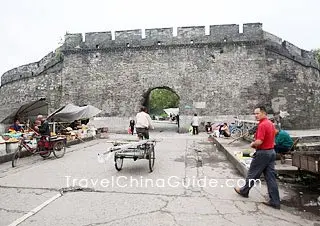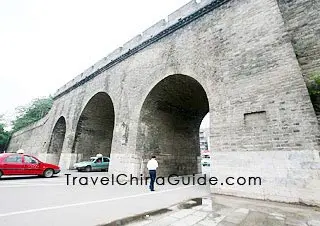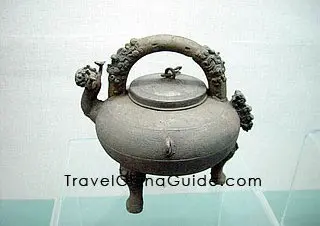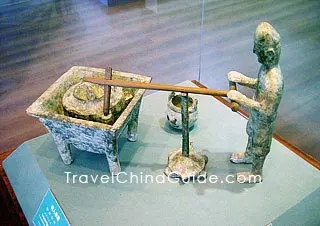Jingzhou Attractions - Things to Do
City Wall and City Gate Tower
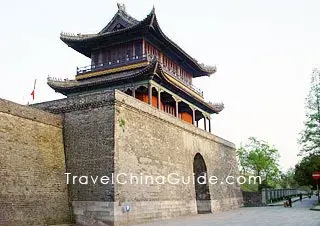 |
| Eastern Gate and Binyang Tower |
The brick City that can be seen by us now was rebuilt during the Ming Dynasty (1368-1644) and Qing Dynasty (1644-1911). It is one of the most complete and solidest constructions that remain. The wall was mainly built with bricks and stripped stones at the bottom, the gaps between the bricks were filled with a sticky rice substance that hardened with time and provided a substancially firm substitute to the cement that we are now so familiar with.
There were 6 ancient city gates in the wall, originally each had a tower. Now the most popular are the Binyang Tower (Binyang Lou) on the Eastern Gate, the Qujiang Tower (Qujiang Lou) on the Southern Gate, and Chaozong Tower (Chaozong Lou) on the Large Northern Gate. Eastern Gate was for welcoming the guests and ambassadors in ancient times, so the tower is very grandiose and the Urn City is also the biggest. On the Qujiang Tower, all the splendor of the Yangtze River comes into view. The Large North Gate was the fortress leading to Beijing and the central area, and people used to see their friends off from here and broke a willow branch to send their greetings, hence the gate was also called 'Willow Gate'. Climbing onto the towers, you gain a magnificent panoramic view of this beautiful city.
|
|
East Gate (Binyang Tower): CNY 27
Big North Gate (Chaozong Tower): CNY 14
Small North Gate (Yuan'an Gate): CNY 7
West Gate: CNY 5
Old South Gate: CNY 5
Jingzhou Museum
|
|
Relics of Three Kingdoms
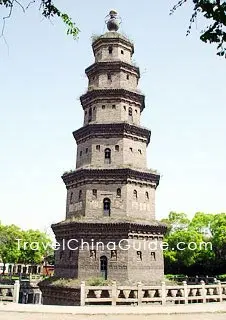 |
| Longevity Pagoda |
Here is a legend where the 'Jiunü Zhuo' (Nine Girls Mound) beside the city gate originates from. It was said that when Guan Yu guarded the city, he met nine fairies flying down to the earth, who said that they were commanded by the Empress of Heaven to take the city back because there were too many quarrels. Not willing to lose the city, Guan thought hard and then an idea occurred to him. He suggested the fairies compete to build a city from the dark to the crowing in the next morning and the winner could manage the city. The fairies agreed. Then they began to build the city with the earth brought by their skirts while Guan used the reeds. Guan quickly finished first but the time was not up. Then Guan shook the reed roosts of the roosters, which made them crow. So the fairies had to fly up to heaven shyly. It was also said Zhang Fei, the sworn little brother of Guan, also came to help but was late, so he dropped the earth outside the gate, hence the Mound is also called 'Zhang Fei's load of Earth'.
Other Cultural Relics
- Last updated on Apr. 13, 2021 -
